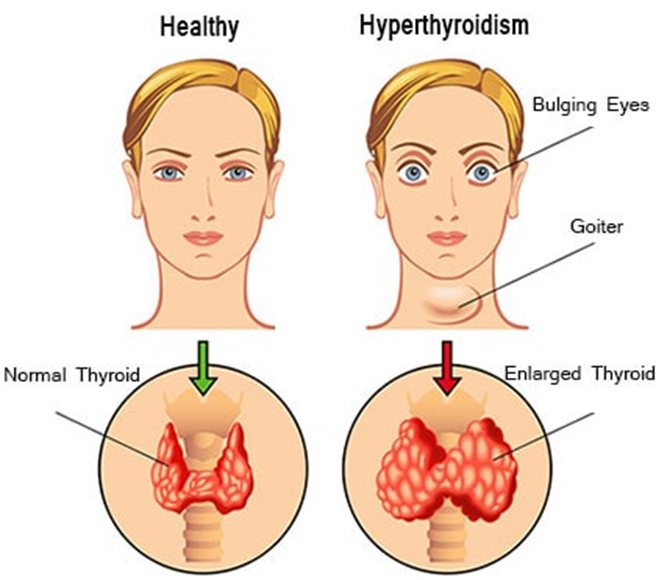The nurse is caring for a 5-week-old infant with suspected hypertrophic pyloric stenosis. Which clinical manifestation would indicate this condition?
Bilious vomiting and constipation
Abdominal distention and currant jelly-like stools
Rounded abdomen and hypoactive bowel sounds
Ravenously hungry after vomiting
The Correct Answer is D
Choice A reason:
Bilious vomiting and constipation are not typical manifestations of hypertrophic pyloric stenosis. Bilious vomiting, which is green or yellow, indicates that the vomit contains bile and is usually associated with intestinal obstruction beyond the stomach. Hypertrophic pyloric stenosis typically causes non-bilious, projectile vomiting because the obstruction is at the pylorus, before the bile duct.
Choice B reason:
Abdominal distention and currant jelly-like stools are not indicative of hypertrophic pyloric stenosis. Currant jelly-like stools are a classic sign of intussusception, a different condition where part of the intestine telescopes into itself. While abdominal distention can occur in pyloric stenosis, the presence of currant jelly-like stools points to a different diagnosis.
Choice C reason:
A rounded abdomen and hypoactive bowel sounds can be seen in various gastrointestinal conditions but are not specific to hypertrophic pyloric stenosis. While a rounded abdomen may be present due to gastric distention, hypoactive bowel sounds are not a hallmark of this condition. The primary symptom of pyloric stenosis is projectile vomiting.
Choice D reason:
Ravenously hungry after vomiting is a classic manifestation of hypertrophic pyloric stenosis. Infants with this condition often vomit forcefully after feeding and then appear hungry again because the food does not pass through the pylorus into the intestines. This symptom, along with projectile vomiting, is a key indicator of pyloric stenosis.
Nursing Test Bank
Naxlex Comprehensive Predictor Exams
Related Questions
Correct Answer is ["A","C"]
Explanation
The correct answer is a. Vomiting, c. Tachycardia.
Choice A: Vomiting
Vomiting is a common symptom of thyroid storm. Thyroid storm is a life-threatening condition that occurs when the thyroid gland releases a large amount of thyroid hormone in a short period. This sudden surge in thyroid hormone can cause severe metabolic disturbances, leading to symptoms such as vomiting. Vomiting can result from the body’s attempt to cope with the excessive thyroid hormone levels, which can affect the gastrointestinal system.

Choice B: Constipation
Constipation is not typically associated with thyroid storm. In fact, hyperthyroidism, including thyroid storm, usually causes an increase in bowel movements or diarrhea due to the accelerated metabolism. Constipation is more commonly associated with hypothyroidism, where the thyroid gland is underactive and slows down bodily functions.
Choice C: Tachycardia
Tachycardia, or a rapid heart rate, is a hallmark symptom of thyroid storm. The excessive thyroid hormones increase the body’s metabolic rate, leading to an increased demand for oxygen and nutrients. To meet this demand, the heart rate increases significantly, often exceeding 140 beats per minute. This rapid heart rate can be dangerous and requires immediate medical attention.
Choice D: Hypotension
Hypotension, or low blood pressure, is not a typical symptom of thyroid storm. Instead, thyroid storm often causes hypertension (high blood pressure) due to the increased metabolic activity and the body’s heightened demand for oxygen and nutrients. The cardiovascular system responds by increasing blood pressure to ensure adequate blood flow to vital organs.
Correct Answer is D
Explanation
Choice A reason:
Keeping the affected extremity below the level of the heart is not recommended in the management of hemarthrosis in a child with hemophilia A. Elevating the affected limb can help reduce swelling and pain by promoting venous return and decreasing pressure in the joint.
Choice B Reason:
The use of topical analgesic cream on the painful area is not a primary treatment for hemarthrosis in hemophilia A. While it may provide some temporary relief, it does not address the underlying issue of bleeding within the joint. The primary treatment involves replacing the missing clotting factor.
Choice C Reason:
Instructing the parent to call their health care provider to obtain a plan of care is important, but it is not the immediate management step for hemarthrosis. Prompt treatment with clotting factor replacement is crucial to stop the bleeding and prevent joint damage.
Choice D Reason:
Prompt infusion of Factor VIII is the primary treatment for hemarthrosis in a child with hemophilia A. This treatment helps to replace the missing clotting factor, stop the bleeding, and prevent further joint damage. Early intervention is essential to minimize complications and promote healing.

Whether you are a student looking to ace your exams or a practicing nurse seeking to enhance your expertise , our nursing education contents will empower you with the confidence and competence to make a difference in the lives of patients and become a respected leader in the healthcare field.
Visit Naxlex, invest in your future and unlock endless possibilities with our unparalleled nursing education contents today
Report Wrong Answer on the Current Question
Do you disagree with the answer? If yes, what is your expected answer? Explain.
Kindly be descriptive with the issue you are facing.
